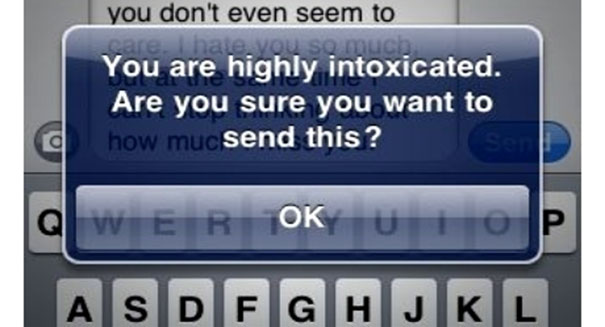
New research proves that humans can send chemical messages like our animal counterparts, albeit with a little liquid courage
Many of us hold alcohol responsible for some regrettable text messages, but few of us do so on purpose. That’s why it’s all the more astounding that Canadian and UK researchers were able to send the world’s first text message via vodka fumes. Was it a mishmash of undecipherable letters? A not-so-subtle invitation for a late night rendezvous, perhaps?
No, unfortunately. The message simply read “O Canada.”
The researchers say their simple new system can be used wherever conventional wireless technology fails (inside a crowded nightclub?). “Chemical signals can offer a more efficient way of transmitting data inside tunnels, pipelines or deep underground structures,” said Professor Andrew Eckford, whose lab conducted the experiment.
The chemical signal was sent to a receiver about 13 feet across the lab, aided by a boost from a standard tabletop fan. The receiver then demodulated the fumes by assessing whether their concentration was increasing or decreasing. The result was essentially a form of binary code.
“We believe we have sent the world’s first text message to be transmitted entirely with molecular communication, controlling concentration levels of the alcohol molecules, to encode the alphabets with single spray representing bit 1 and no spray representing the bit 0,” said York doctoral candidate Nariman Farsad, who led the experiment.
Though a strange concept to humans, chemical communication is common in the animal world. Consider cats and dogs who spray to mark their territory, or insects like bees and ants who send chemical signals to relay things like instructions and directions. The researchers say their system also fills holes in the molecular communication literature by providing an inexpensive platform for testing theoretical models. It’s an easy and expensive way for researchers to experiment with molecular communication.
“Our system shows that reliable communication is possible and our work motivates future studies on more realistic modelling, analysis, and design of theoretical models and algorithms for molecular communication systems,” said Engineering Professor Weisi Guo at the University of Warwick, UK, who initiated the research.
“They can also be used to communicate on the nanoscale, for example in medicine where recent advances mean it’s possible to embed sensors into the organs of the body or create miniature robots to carry out a specific task such as targeting drugs to cancer cells,” he added.
No word on whether scientists were able to condense “Wut R U up 2?” into a vodka-delivered text message. Drunk humans might still have the edge in that respect.
Leave a Reply